Gibraltar
On the southern part of the Iberian peninsula lies the British territory of Gibraltar whose rock is a famous landmark of the region (and the world). Gibraltar is no larger than 6.8 square kilometers and borders in the north to Spanish Andalusia and the Strait of Gibraltar to the south. Gibraltar was conquered by a British-Dutch force in 1704 and has since belonged to the British kingdom. Its strategic location on the Strait of Gibraltar meant that the British have always had full insight into naval traffic between the Mediterranean and the Atlantic. During most of the 1700s several Spanish attempts were made to recapture Gibraltar without success. Between 1779 and 1783, in connection with the American war of independence (where Britain fought against the United States), a coalition between Spain and France attempted to conquer Gibraltar by sieging the territory (the great siege). This too failed because the British defenders (and residents) received supplies by sea.
It was also from Gibraltar that the British navy under the command of vice admiral Lord Nelson set sailed in October 1805 towards Cape Trafalgar off the coast of Cadiz in southwestern Spain. Lord Nelson defeated a French-Spanish coalition led by Admiral Villeneuve. The battle has gone down in history as the Battle of Trafalgar and is probably history’s most famous sea battle.
After Franco won the Spanish civil war (1936–1939), Spain became a fascist dictatorship. In 1939 the Second World War broke out and the German armies initially reaped great success. In the summer of 1940 Britain was the only country still in war with Germany but not yet defeated. In October 1940, Hitler and Franco met in Hendaye, southwestern France and on the border with Spain. The purpose of the meeting was to discuss a Spanish entry into the war on the side of the Axis powers. An important topic discussed was to allow Germany to transport troops through Spain to invade Gibraltar. Franco, however, was on his guard and was not as convinced as Hitler of Britain’s impending defeat and chose to stay out of the war. The german plan to invade Gibraltar with the support of Spain had to be abandoned.
In August 1940, the German war leadership had put forward a plan for Hitler how Gibraltar would be conquered. The plan was called Operation Felix and scheduled for January 1941 and dependent on German troops was given access to Spanish territory. But since Franco was not persuaded to join the war, the plan had to be abandoned. But already at the end of the thirties and especially as long as Britain was at war with Germany, it could not be ruled out from the British that Gibraltar would be affected by the war. Based on past experience, tunnels were dug out and existing tunnels expanded. The rock would serve as both shelter and storage for Gibraltar’s residents and defenders. In the tunnels there was a communications centre, power plant, water treatment plant, hospital, bakery, ammunition storage and an engine workshop. In total, about 55 kilometers of tunnels were built.
Ever since Gibraltar came under British control, it is above all an attack from the sea the British feared. Therefore, the British immediately built a number of batteries and other defense facilities around the rock in order to face an attack from the sea. The Second World War was no exception and several batteries were on standby in the event of an attack from the Axis powers. The whole of Gibraltar really became one big bastion. Gibraltar was also subjected to bombardment from Italian bombers, but without actually causing any major damage. Italian combat divers penetrated the port of Gibraltar with the aim of sinking military ships and cargo ships. But even here the successes were modest. The German fleet posed no threat as it is only about 25 kilometers between Gibraltar and (Spanish) Morocco. In this way, it was impossible for the German navy entering the Mediterranean through the Strait of Gibraltar without being detected and subjected to artillery shelling from the batteries of Gibraltar. 62 German submarines managed to sneak through the strait, but none of them managed to get back to the Atlantic, but all were sunk during missions in the Mediterranean.
Starting in 1940, the British began to evacuate civilians from Gibraltar to Morocco, Jamaica, Madeira and London. Over 20,000 were evacuated, mostly to make room for military personnel who increased drastically in the years that followed the outbreak of war. When the United States and Britain invaded North Africa in November 1942 (Operation Torch), the invasion was led by the American commander, Dwight D. Eisenhower, from a command center inside the rock. In connection with the outbreak of war, the British also began to expand the small airfield on the northen side. The expansion continued until 1943 and as filling material stones from the construction of the tunnels in the rock were used. It was also from Gibraltar that the Polish commander-in-chief, Wladyslaw Sikorski, took of, July 4th, 1943, along with several other military leaders when the plane crashed into the sea shortly after departure. Sixteen people died, only the pilot survived. Sikorski was not only Polish commander-in-chief, he was also the prime minister of the Polish London-based exile government.
In late 1941, a secret bunker began to be built inside the upper rock of Gibraltar. Here, in the event of a German occupation, six men (an officer, two doctors and three signalers) secretly, walled in and completely cut off from the outside world would monitor the Strait of Gibraltar and report traffic in the strait back to the british military command. The operation was called Tracer and the bunker was called, Stay Behind Cave. It was equipped with the most vital and basal and had supplies for a stay up to seven years if necessary. A large water tank was adjacent to the bunker and the floor consisted of cork to dampen the sound of walking people. Well hidden and small camouflaged observation posts were the only contact with the outside world. The bunker was completed in 1942, but when Germans withdraw from North Africa in May 1943, an occupation of Gibraltar was seen as unlikely. The bunker therefore never had to be used for its purpose, closed and fell into oblivion for several decades before it was discovered in the late nineties.
Current status: Preserved with museums/monuments (2024).
Location: 36°07'25.71"N 05°20'34.78"W
Get there: Walk.
Follow up in books: Porch, Douglas: The Path to Victory: The Mediterranean Theater in World War II (2004).



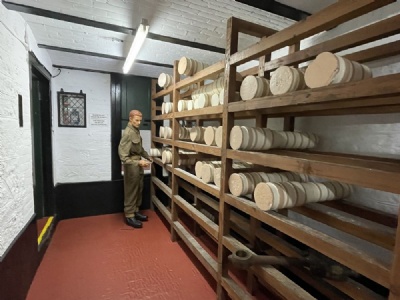








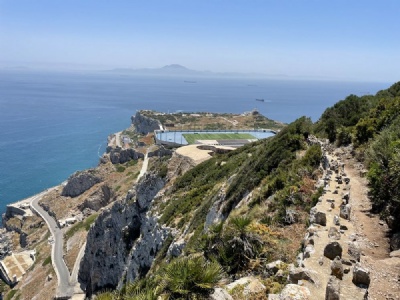


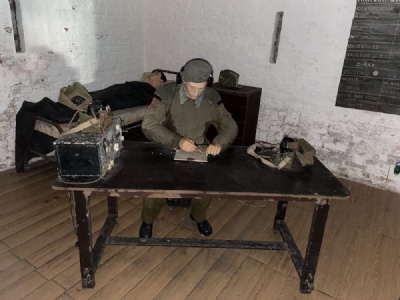














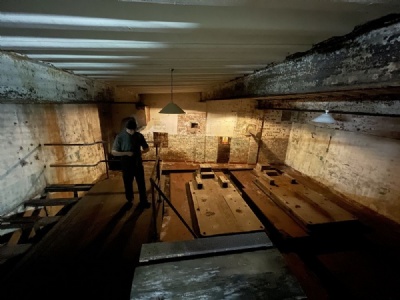
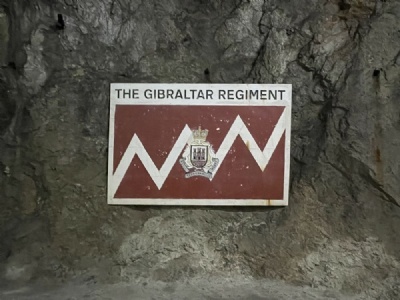
The Rock of Gibraltar is a nature reserve with several interesting sights. The tunnels dug out during the war (WW2 Tunnels) is a museum. Also the tunnels dug out in connection with the Great siege between 1779 and 1793. During the Second World War, both tunnels were expanded with additional passageways. Both museums have interesting exhibits (although the exhibits in WW2 Tunnels were under redevelopment during my visit). Several batteries and bunkers are also preserved and can be visited. Some of them are easily accessible while others are less accessible. All sights can be reached on foot but there are steep climbs that require ones physics. Especially if you want to visit the bunkers along the Mediterranean Steps on the steep eastern side of the rock. A path that winds about 1.5 kilometers between O’Hara’s battery and the Jewish Burial site. It offers amazing views and on cloudless days Africa on the other side of the strait can be easily seen. Several batteries as O’Hara’s battery and Spur’s battery can be visited, whilst other batteries are inaccessible or are within military area. Stay Behind Cave is also available but closed for visitors. For those interested in military history, there are plenty of places to visit but given the topography of the rock, I recommend setting aside a full day if you want to see what is WW2 related.
The easiest way to visit Gibraltar is by foot. The border is open around the clock and you can pass it as many times as possible on presentation of passport or similar documents, at least if you are a citizen of the EU. For my part, I chose to stay on the Spanish side in the city of La Linea de la Concepcion. It is cheaper with hotels and it is no more than a ten minute walk to the border. The local currency is British pound but Euro currency also works. Gibraltar is so much more than just history of war. Who has not seen or heard of the macaques monkeys that in a way become synonymous with Gibraltar. They originate from Morocco and have become a natural feature on the upper part of the Gibraltar rock. They are not afraid of people but as a tourist one should respect that they are wild. The opening scene of the 15th Bond film, Living Daylights (1987), takes place on the upper rock and several movie locations are recognizable. Below the western side of the rock lies Gibraltar city. At the far end of Gibraltar’s southern tip (Europa Point) is a memorial dedicated to Wladyslaw Sikorski consisting of a propeller from the crashed plane (B-24).
It is hard not to be impressed by Gibraltar. Its history and topography makes it tickle a little extra when approaching the territory. Its strategic location with full visibility into the strait of Gibraltar makes it understandable why it was (and perhaps still is) a central place in the British kingdom. Its military importance has perhaps diminished over the years, but in the years that the British navy dominated the seas, it is not difficult to understand its strategic value. Although over the years there have been Spanish voices claiming the return Gibraltar to Spain, there is no risk that these tensions turning in to something worse than just voices.